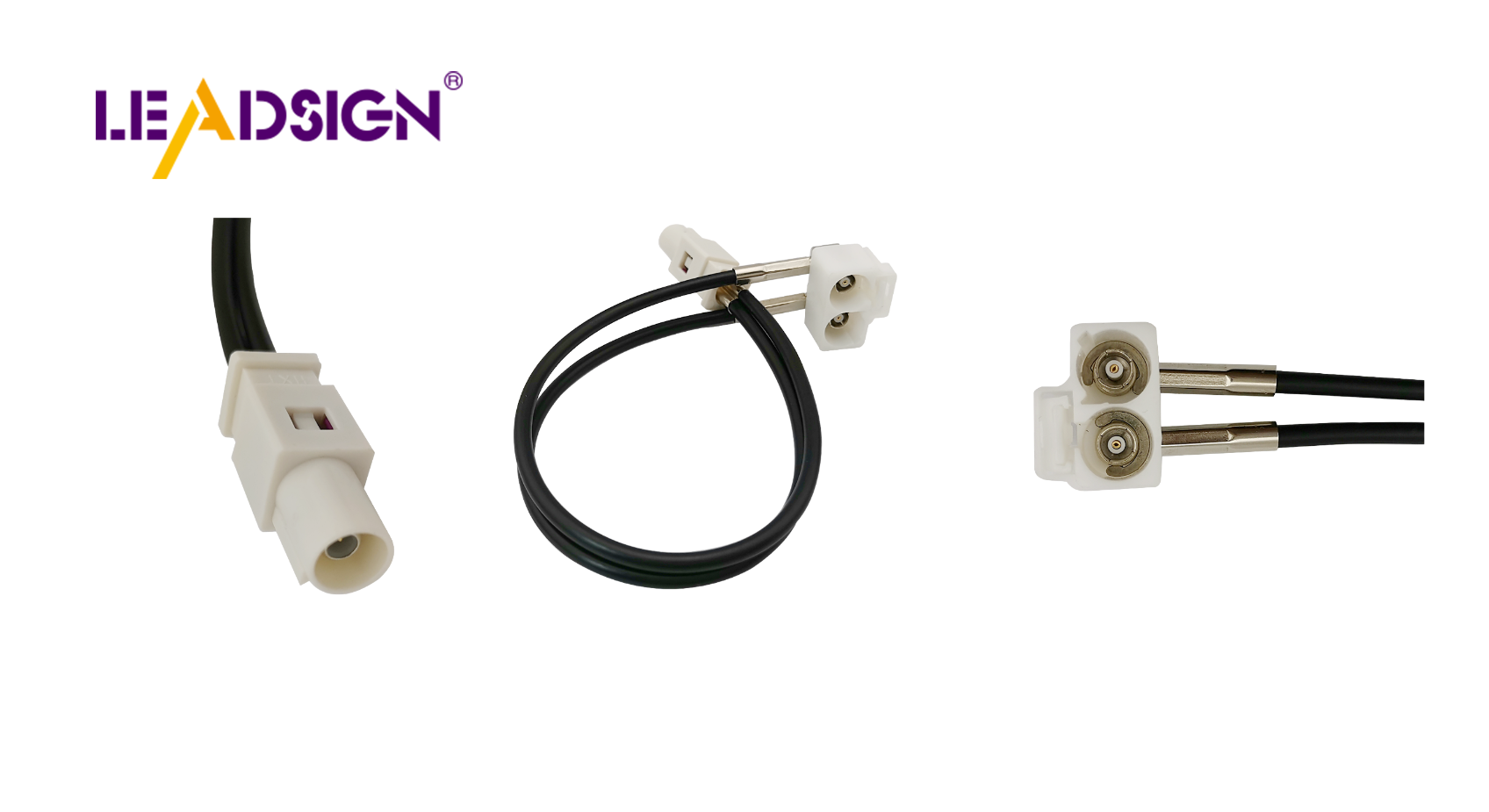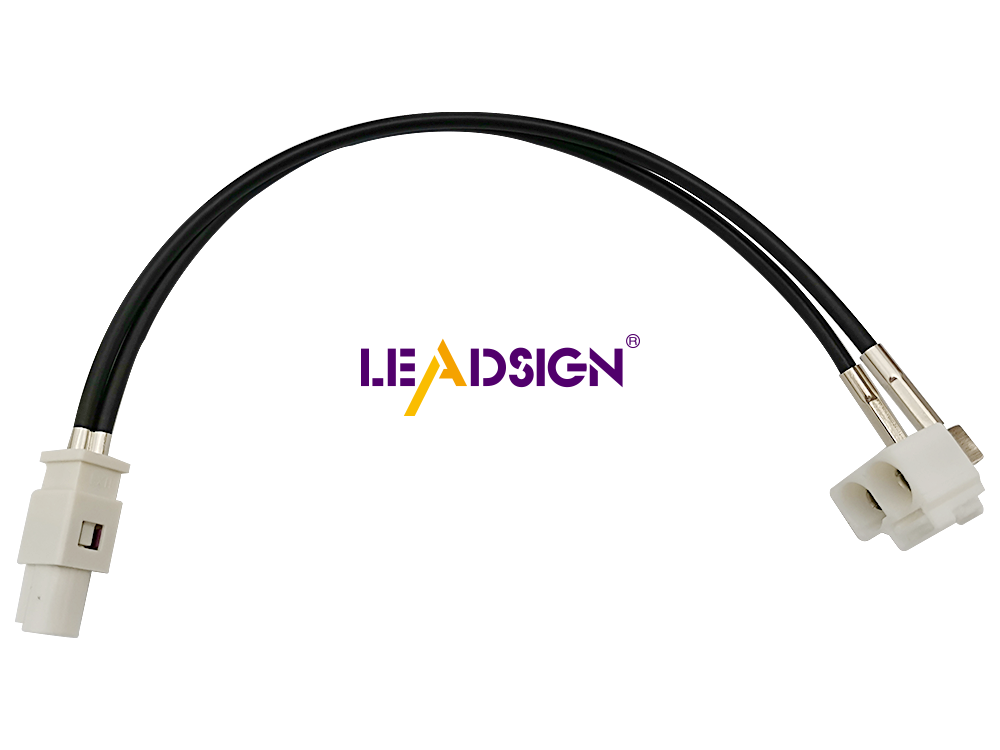Types of Automotive Wires and Their Uses with 2 Pin Connectors

In cars, knowing the types of automotive wires is important. They connect to 2-pin connectors. These connectors help car parts work well. You see them in engines, lights, and air systems. Picking the right car wiring wire is key for good performance. The wire must handle power and stay dry. It should fit the car's electric system. Choosing the right wires makes your car's electric parts work better and last longer.
Key Takeaways
Understanding the different types of automotive wires, such as primary wires, multi-conductor cables, shielded wires, coaxial cables, and battery cables, is essential for optimal vehicle performance.
Choosing the right automotive wire enhances safety, efficiency, and longevity of your car's electrical system, preventing issues like electrical shorts and fire hazards.
2 pin connectors are versatile and crucial for linking various automotive wires, ensuring strong connections that support both low and high power applications.
When selecting 2 pin connectors, prioritize durability, ease of use, and compliance with safety standards to ensure reliable performance in your vehicle.
Investing in high-quality automotive wires and connectors can save you from future electrical issues and costly repairs, enhancing the overall reliability of your car.
Using shielded wires is vital in reducing electromagnetic interference, ensuring clear signals for critical systems like infotainment and navigation.
Multi-conductor cables simplify complex wiring setups, saving space and making installation and maintenance easier.
Types of Automotive Wires

Primary Wires
Primary automotive wire is very important for your car's electric system. These wires are used in low-power things like lights and dashboard controls. They are the most common wires in cars. You can find them in different sizes. Thicker wires carry more power, so they are good for batteries.
Uses in automotive electrical systems
Primary wires are found all over your car. They connect important parts like lights, ignition, and charging systems. These wires help electricity move to power things like headlights and dashboard lights.
Benefits and characteristics
Primary wires have many good points. They bend easily, so you can fit them in tight spots. They also have strong covers that protect them from heat and damage. This makes sure your car's electric system works well for a long time.
Multi-Conductor Automotive Cables
Multi-conductor cables are needed for complex car wiring. They have many wires together, letting you send many signals or power lines in one cable. This makes wiring easier and less messy.
Applications in complex wiring systems
You find multi-conductor cables in places needing many connections, like infotainment and engine control. These cables make wiring simpler and easier to handle.
Advantages of using multi-conductor cables
Multi-conductor cables have many benefits. They cut down on the number of wires, saving space and weight. They also make setting up and fixing things easier since you deal with one cable instead of many.
Shielded Wires
Shielded cables keep signals safe from electromagnetic interference (EMI). In cars with lots of electronics, shielded cables are key for clear signals. They make sure your car's electronics work without problems from other parts.
Importance in reducing electromagnetic interference
Shielded wires are used in systems like infotainment and ADAS. These need clear signals to work right. Shielded cables stop EMI from messing up signals, keeping your car's electronics running smoothly.
Common uses in automotive electronics
Shielded cables are often used where exact signals are needed. You see them in radios, GPS, and other communication tools. Using shielded cables helps keep your car's electronics reliable and effective.
Coaxial Cables
Coaxial cables send signals in your car. They have a center wire, an insulator, a metal shield, and an outer cover. This setup helps them carry signals without losing much. They are great for cars.
Role in sending signals
In cars, coaxial cables carry signals clearly. They handle high-frequency data well. This keeps signals strong and clear. They are used in radios and GPS systems.
Uses in cars
Coaxial cables are in many car systems. They send sound and video in infotainment systems. They also help GPS work well. Coaxial cables keep signals good in your car.
Battery Cables
Battery cables give power in your car. They link the battery to the car's electric parts. These cables are thick to handle big power for starting the engine.
Uses in power
Battery cables send power from the battery to the starter. They help start the car and run lights and ignition. Without them, the car won't work.
Features and benefits
Battery cables are strong. They handle big power and protect against heat. Good battery cables make your car's electric system last longer.
Why 2 Pin Connectors Matter in Cars
Working with Different Car Wires
2 pin connectors join different car wires. They help your car's electric parts work well. These connectors fit with primary wires, multi-conductor cables, shielded wires, coaxial cables, and battery cables. Each wire type does a special job. 2 pin connectors keep these connections strong.
How They Fit with Different Wires
You might ask how 2 pin connectors fit with many wires. Their design is the key. They can handle different power levels. This makes them good for many car uses. For example, they link low-power wires like dashboard controls and high-power battery cables.
Why Use 2 Pin Connectors
2 pin connectors have many good points. First, they make strong links, stopping electric problems. This is important for car safety and working well. Second, they make wiring easy. You can connect and disconnect wires without special tools. This makes fixing things simple.
Picking the Right 2 Pin Connectors
When picking 2 pin connectors, think about what you need.
Things Like Strength and Easy Use
Strength is important. You want connectors that last in tough places, like hot or shaky spots. Look for strong materials that last long. Easy use is also key. Pick connectors that are simple to put in and take out. This saves time when fixing things.
Meeting Car Rules
Lastly, make sure connectors meet car rules. This means they are safe and work well. By picking connectors that follow these rules, you know your car's electric parts are safe and work right.
Choosing the right automotive wires is very important. It helps your car work well and stay safe. Think about a few things when picking wires. Temperature resistance is one. It means wires can handle engine heat. Chemical and abrasion resistance is another. It keeps wires safe from damage and makes them last longer. Wires should meet car rules for safety and quality. By doing this, your car's electric system stays strong and works well.
FAQ
What are the main types of automotive wires?
There are different types of automotive wires. Each has a special job. The main ones are:
Primary Wires: Used for small things like lights and dashboards.
Multi-Conductor Cables: Good for complex systems like radios and engines.
Shielded Wires: Stop interference, keeping signals clear.
Coaxial Cables: Carry high-frequency signals, used in radios and GPS.
Battery Cables: Bring power from the battery to car parts.
Why is it important to choose the right automotive wire?
Picking the right wire is very important because:
Safety: Stops shorts and fire risks.
Efficiency: Helps the car's electric system work well.
Longevity: Good wires last longer and need less fixing.
How do 2 pin connectors work with different automotive wires?
2 pin connectors are flexible. They join different wires. They make strong links, which are key for your car's electric parts. They handle both low and high power.
What should you consider when choosing 2 pin connectors?
When picking 2 pin connectors, think about:
Durability: Pick strong ones that last in tough spots.
Ease of Use: Choose ones easy to put in and take out.
Compliance: Make sure they meet car safety rules.
How can you determine the appropriate automotive primary wire?
To pick the right primary wire, think about:
Application: Know how you'll use the wire.
Environment: Think about heat and where it will be.
Wire Gauge: Pick the right size for safety and work.
What are the risks of using the wrong type of automotive cable?
Using the wrong cable can cause problems like:
Electrical Shorts: Wrong cables can short out.
Interference: Bad cables mess with systems.
Fire Hazards: Poor cables can start fires.
Why invest in high-quality 2-wire electrical connectors?
Buying good 2-wire connectors is smart because:
Performance: They make strong links, helping the car work.
Avoid Future Issues: Good connectors stop problems and costly fixes.
What are the benefits of using multi-conductor automotive cables?
Multi-conductor cables have many good points:
Space Saving: Fewer wires mean more space.
Simplified Wiring: Easier to set up and fix with one cable.
How do shielded wires reduce electromagnetic interference?
Shielded wires have a cover that blocks outside signals. This keeps signals clear and stops other parts from messing them up.
What role do coaxial cables play in automotive applications?
Coaxial cables send high-frequency signals in cars. They keep signals strong, making them great for radios, GPS, and entertainment systems.
See Also
Understanding HSD Connectors Used In Automotive Systems
Why FAKRA Connectors Matter For Automotive Solutions
An In-Depth Overview Of HSD Connector Technology

